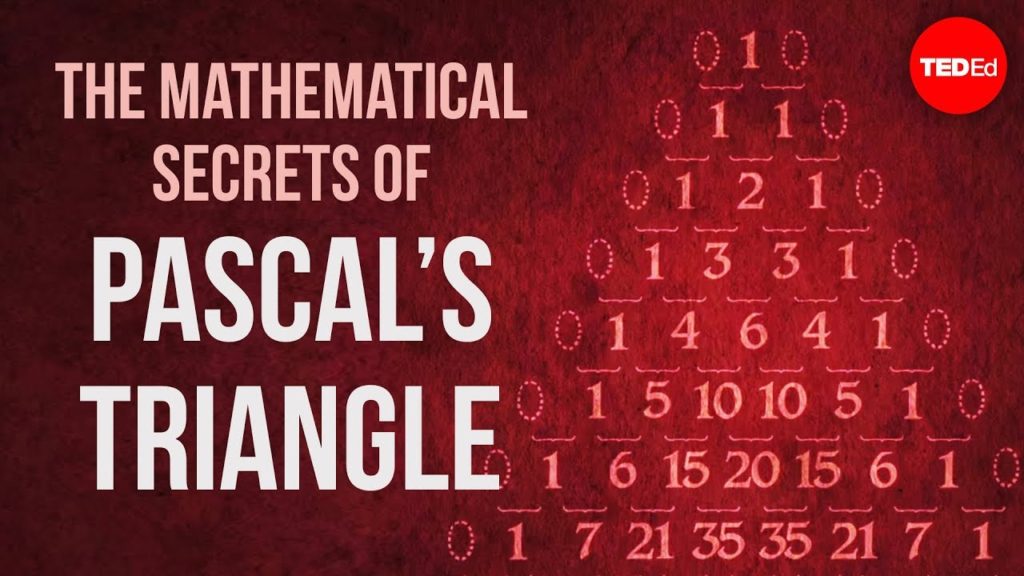The mathematical secrets of Pascal’s triangle

Let’s learn about Pascal’s triangle today!
It was named after french mathematician Blaise Pascal who contributed a lot. Indian mathematicians called it the Staircase of Mount Meru, It’s Khayyam triangle in Iran, and Yang Hui’s Triangle in China. It is full of patterns and secrets.
Primarily there’s a pattern that generates it, Initiate with 1 and imagine an invisible zero on either side of it, add them in pairs and you’ll generate the next row and repeat it though it goes on infinitely.
Each row corresponds to coefficients called the binomial expansion of (x+y)^n , where n is the no. of rows and we commence by starting from 0 and when n is 2 then we get (x^2) + 2xy + (y^2). The coefficients or numbers in front of the variables are the same as the numbers in a row of Pascal’s triangle. So the triangle is a quick and facile way to look up all these coefficients. There is so much for more like adding up the numbers in each row you’ll find successive powers of 2, or in a given row, treat each number as part of the decimal expansion we will get 11^n. There are also geometric applications, we find positive integers a.k.a natural numbers which are called the triangular number in the next diagonal, it also has tetrahdral numbers and Sierpinski’s triangle, a fractal shade in all of the odd numbers when 1000’s rows are added.
This triangle is very useful when it comes to probability and calculations in the domain of combinatorics. The patterns in Pascal’s triangle are a testament to the elegantly interwoven fabric of mathematics and its still revealing fresh secrets and mathematicians recently discovered a way to expand it to polynomials.
The essence is to make complicated things simple.






Responses